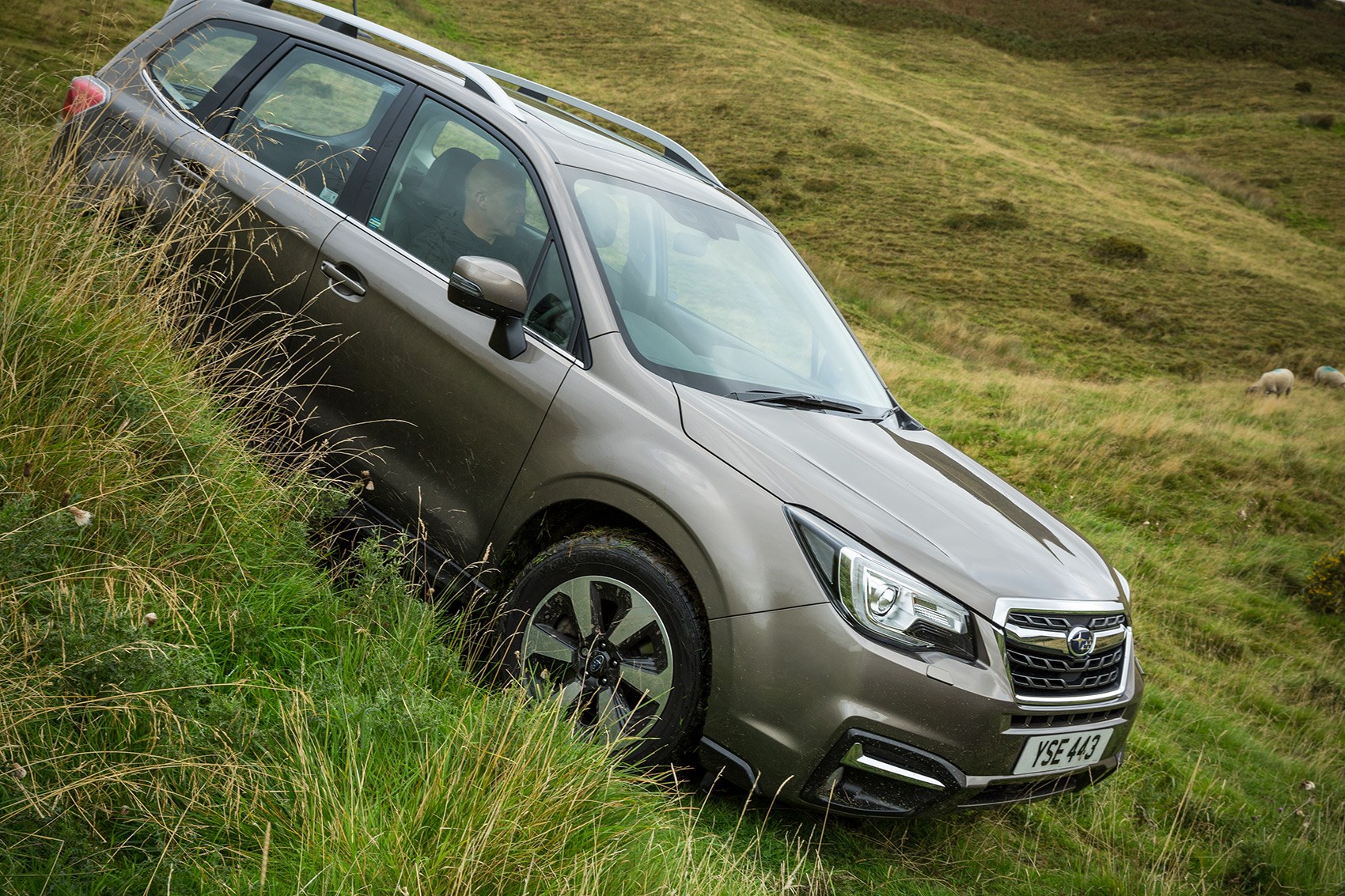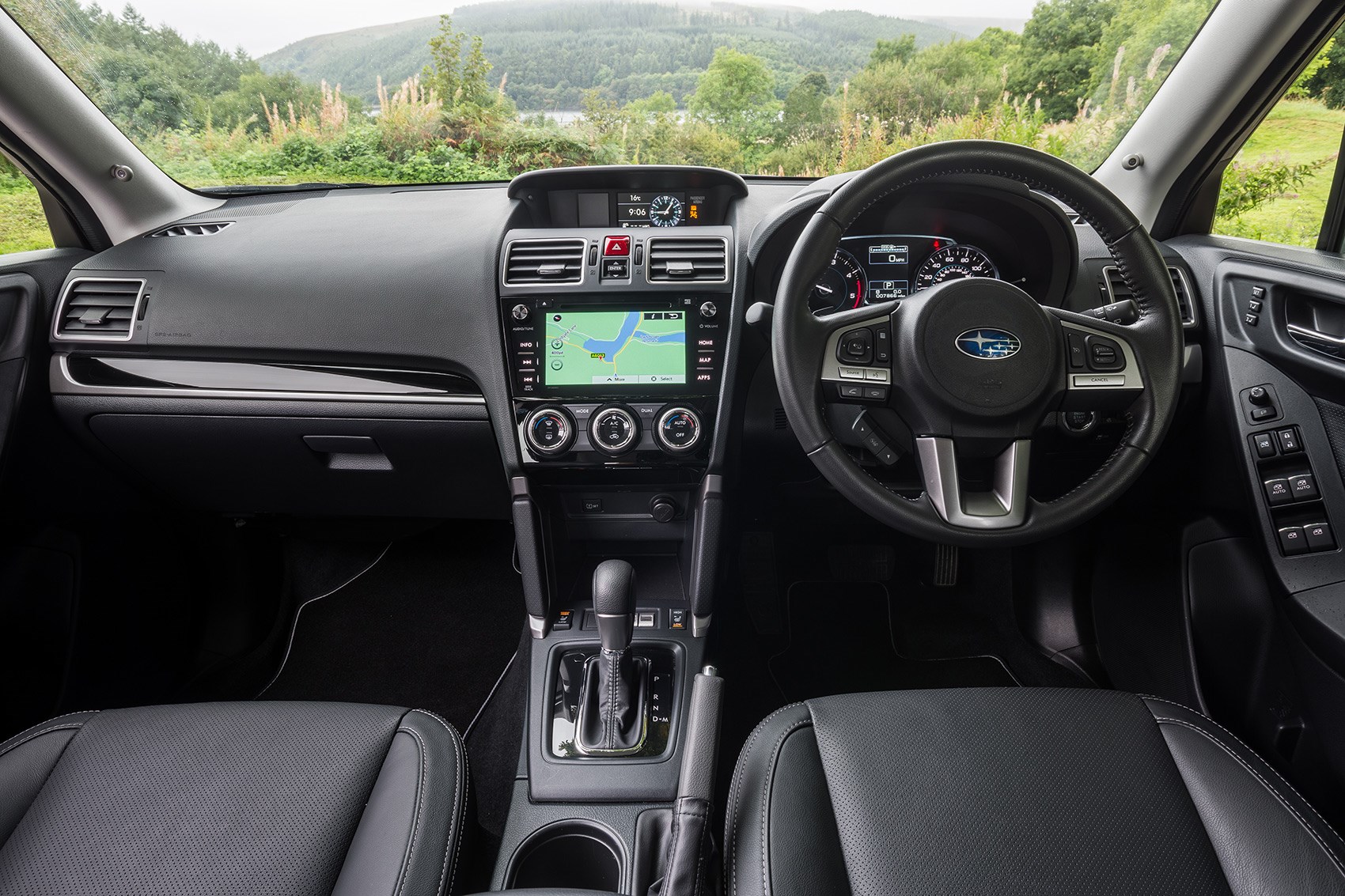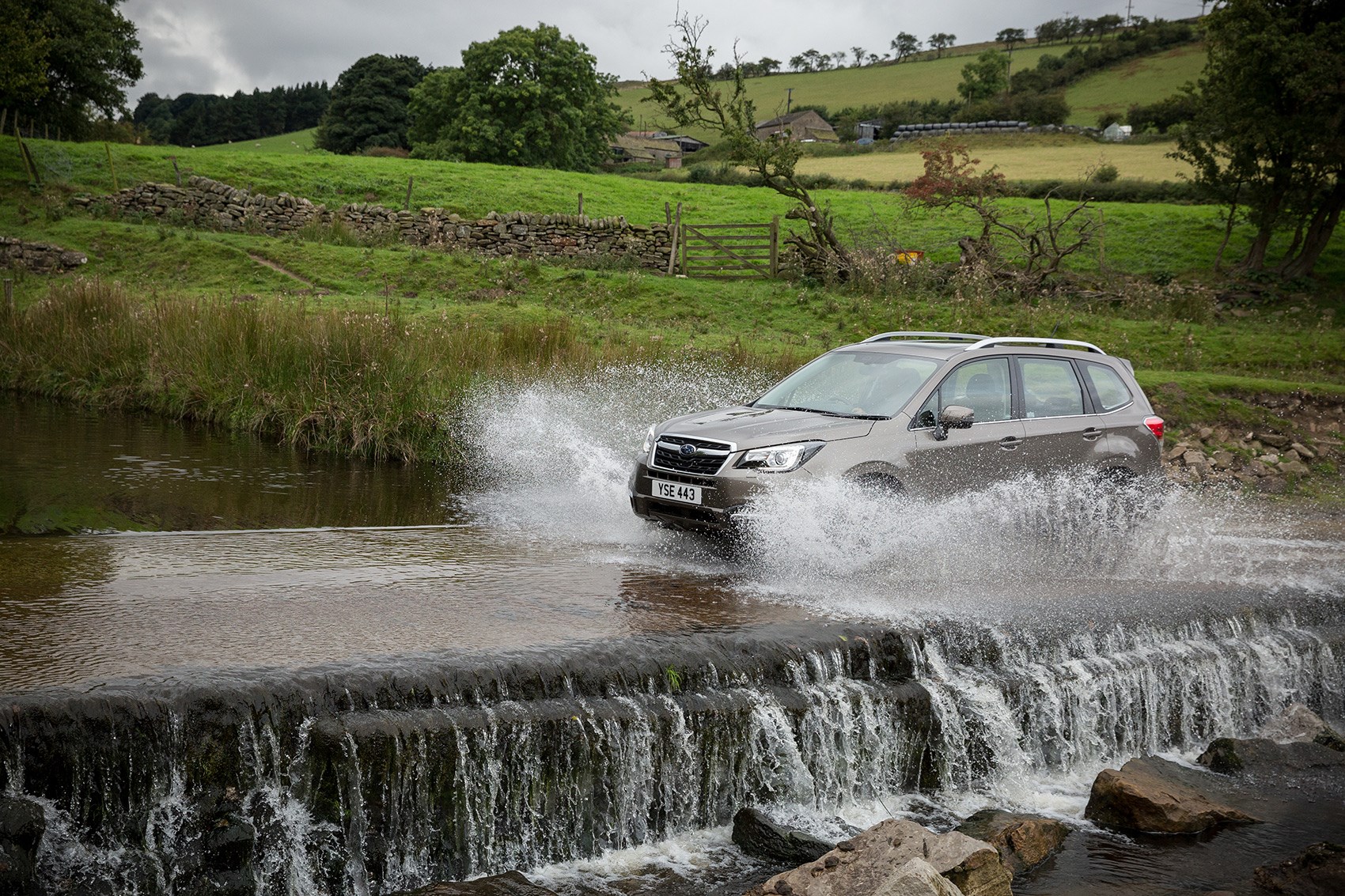► Trusty workhorse: 2.0 petrol, CVT
► Serious 4×4, not a fashion-led crossover
► More refinement, tech than earlier models
The most rugged, no-nonsense member of a range that’s filled with nothing but rugged, no-nonsense cars, the Subaru Forester is easily overlooked, and undeservedly so. There’s much to like about it, especially if your priorities are at the utilitarian end of the spectrum.
That said, Subaru doesn’t make it easy for us to offer an unqualified endorsement for any of its cars, and this particular version of the Forester sums up so much that’s frustratingly off-kilter about too many Subarus.
Whoa there a second – what exactly is a Subaru Forester these days?
Around since 1997, and more or less its current shape since 2009, the Forester was way ahead of the curve in being a road-biased, family-friendly 4×4. It’s still much more dirt-friendly than most SUVs, but with every update it gets slightly plusher and equipped with more electronic safety aids and infotainment.
For the 2018 model year, Subaru has added EyeSight, a dual-camera scanner that monitors other traffic and pedestrians to alert you if an impact is likely and adjust cruise control to maintain a safe distance from the car in front. With tech like this, the Subaru Forester has secured a top five-star Euro NCAP crash test rating.

It’s currently available with a choice of two 2.0-litre petrol fours and a 2.0-litre diesel four. There are five trim levels and a choice of manual or Lineartronic CVT transmissions; everything comes with all-wheel drive, naturally.
And what’s the problem with this particular version?
Factor out the CVT on our Forester 2.0i XE Premium Lineartronic and you’d fix the worst of the problems at a stroke. Like most CVT gearboxes on most cars, it’s a highly unsatisfactory form of transmission from a driving point of view, even if it’s an efficient and economical way to run an engine. There are ‘steps’ engineered in to replicate the effect of changing gear, but they’re not well spaced. Noisy and strained, this CVT is a failed attempt to solve a problem that doesn’t exist. Fortunately, a manual is also available.
This 148bhp petrol engine is fine for pootling about, and smooth at all revs, but it’s gutless. Fortunately, you could opt for a diesel or a more powerful petrol engine (although that 238bhp boxer four doesn’t have the manual gearbox option).
We test the Subaru Forester diesel
Other problems include generally poor soundproofing, seats that offer little lateral support, brakes that seem lacking in urgency (although this can be an advantage off-road, where you really don’t want sudden braking), not helped by a lack of engine braking, and there’s a spectacularly horrible action to the gearlever. A car that makes you wince every time you engage reverse is not doing itself any favours.
But it’s not all bad…
Far from it. The ride is generally very good. It’s a car built on the assumption that roads are bumpy, and it swallows most of those imperfections with little fuss. The suspension and steering have been tweaked, making current Foresters more rigid and more flickable than earlier versions.

The view out is fantastic. There’s a tremendous amount of glass letting in a lot of light and giving you and your passengers a clear view of the traffic and the scenery. The mirrors are excellent too.
And it’s a well packaged car. There’s a good amount of room in every direction, removing all the discomfort that can so easily come from having your knees, elbows or head rubbing against the hardware. For a car with a modest footprint, the boot is a decent size too: 505 litres with the rear seats in position, 1573 litres with the seats folded down (although the roughly comparable Land Rover Discovery Sport has vastly more luggage space). The rear seats split 60:40, giving good versatility. The doors open wide, making it very easy to get in and out.
There’s a decent central infotainment touchscreen, which has a particularly strong repertoire of mpg diagrams, and analogue instruments for the driver; it’s an effective combination. There’s a good level of standard equipment, including dual-zone climate control, and a practical options list that includes heated rear seats and bigger wheels.

It can feel like a good place to be. You can be ticking along very happily, with you and your family and your dog enjoying the smooth ride and the view, but then it all goes horribly wrong when you – ahem – accelerate. It’s so slow, and makes such a lot of CVT-related fuss, that you wish you hadn’t.
This is pretty fundamental, isn’t it – a car that doesn’t like accelerating?
Verdict
This is one of those cars that many people – including your reviewer – would be happy to live with. It’s comfortable, easygoing, good for passengers, tough, and great for dog walkers and anyone else who makes occasional forays off the road. There is, however, much to criticise about the Forester – a 30-grand car, don’t forget. Much of this negativity could easily be avoided – don’t buy a CVT, for instance; and Subaru would do themselves a lot of favours by using some nicer plastics.
But we have to call it as we find it, and test the car as it is. And on that basis, this particular Forester barely scrapes three stars. There are frustratingly few direct competitors if you’re serious about occasional off-road use – short-wheelbase Mitsubishi Shogun, Land Rover Discovery Sport, Jeep Cherokee, not much else. It’s been Subaru’s top-seller in the UK recently. But the Forester is at best an acceptable compromise, not the answer to your prayers.
All our Subaru car reviews